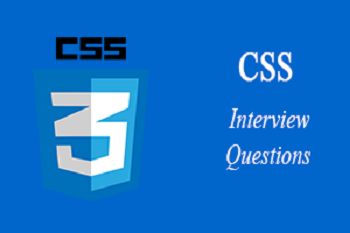CSS interview Question/ Answers Set – 1
link rel=” stylesheet” href=” styles.css”
- The responsive design follows the principle of flexibility. It adapts to the size of the screen. Responsive websites use CSS media queries and flexible grids to change styles based on different factors related to the device, such as display type, width, and height.
- Adaptive design uses static designs instead of flexible layouts. Its design is based on breakpoints that do not respond once they are initially loaded. It detects the type of device used and its other features, then provides the feature and layout based on a predefined set of characteristics.
- Similarity: Both responsive and adaptive designs optimize the user experience across different target devices. Both adjust for different view port sizes, resolutions, and control mechanisms.
Pseudo class in CSS is a keyword applied to HTML element’s selectors, to add special style on HTML events like onblur, onclick, onchange, onhover etc.
The syntax for Pseudo class:
cssselector : pseudo-class { attribute: value; }
The syntax for Pseudo class:
cssselector : pseudo-class { attribute: value; }
Transition in CSS3 is very easy to use, and it provides rapid effects in terms of animation. Some of the main transition properties of CSS3 are:
- transition-delay
- transition-duration
- transition-property
- transition-timing-function
